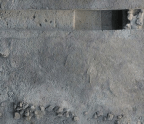Beauty Under Bruges
Jun 11, 2022
4 minutes
By MARLEY BROWN

N JUST 100 YEARS, from the beginning of the twelfth century to the turn of the thirteenth, the population of the Flemish market town of Bruges, in what is now Belgium, grew from 5,000 to close to 50,000. Built on the banks of the Reie River, during the Middle Ages the city became one of the densest urban centers in Europe, a complex network of canals, bridges, and narrow streets connected to the North Sea some eight miles away by a tidal estuary. Over the course of the thirteenth and fourteenth centuries, Bruges attained a rarefied position as one of the world’s commercial and cultural hubs. Venetian, Genoese, Castilian, Portuguese, and German merchants took up residence in
You’re reading a preview, subscribe to read more.
Start your free 30 days





